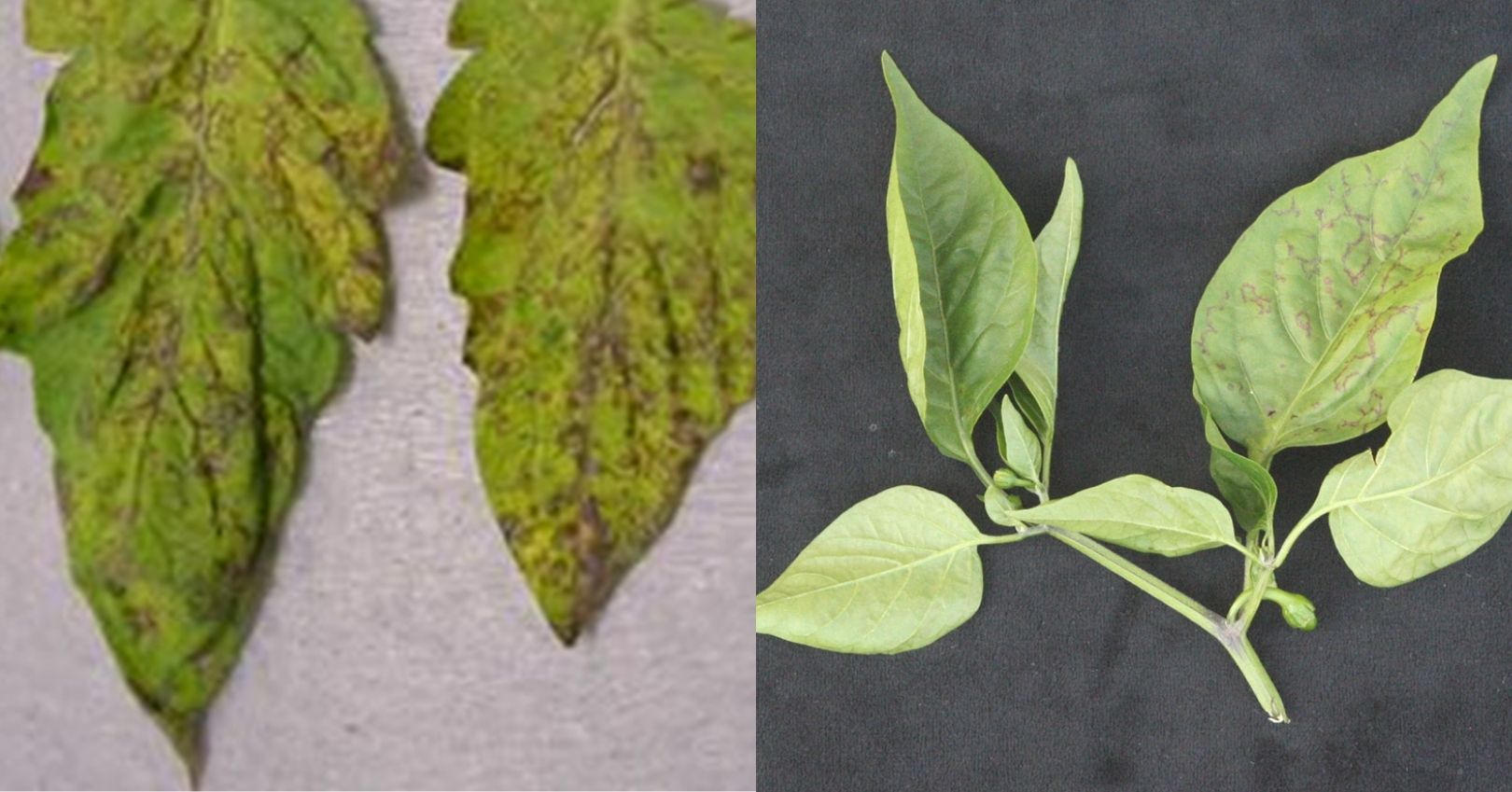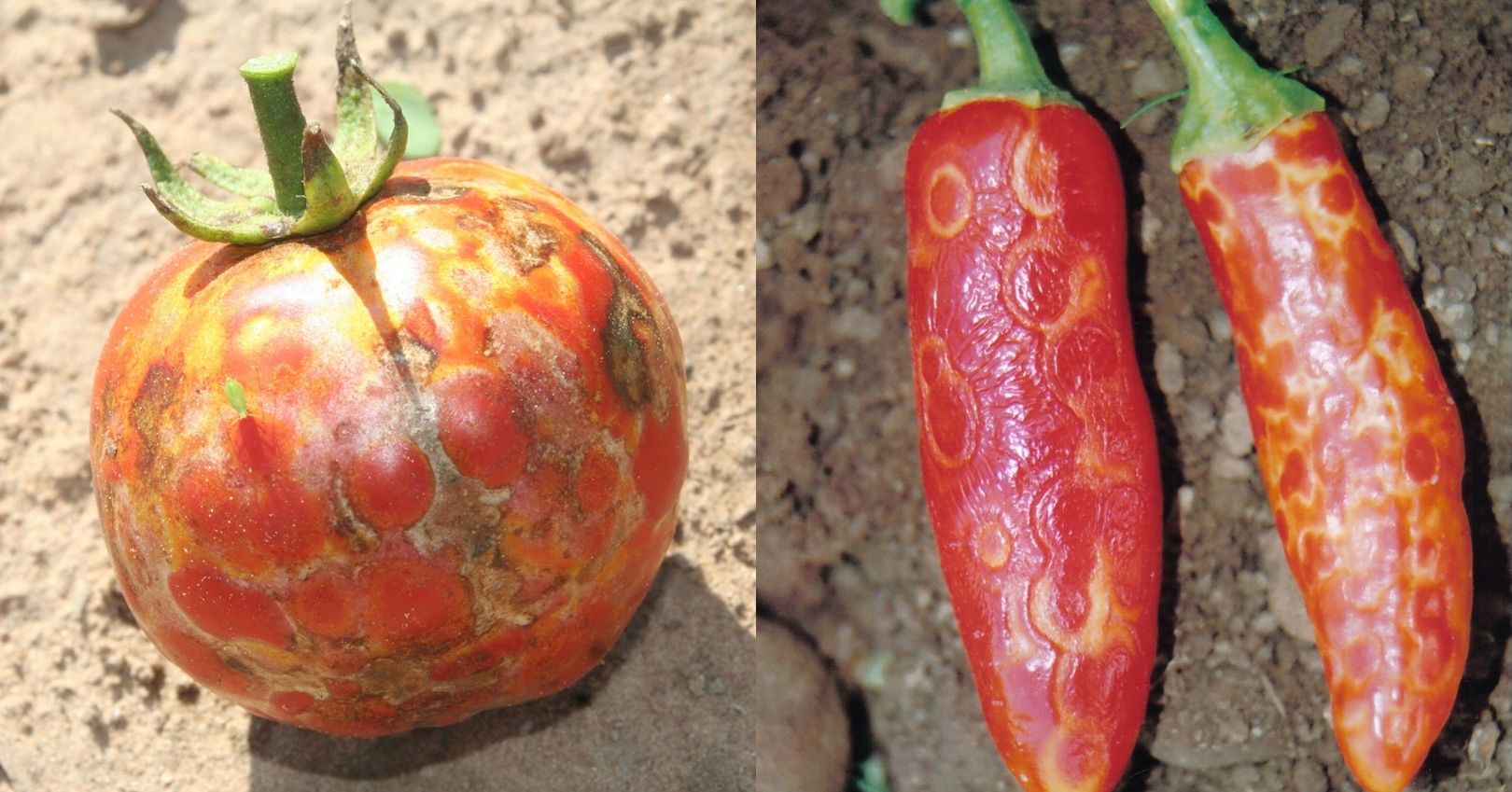Tomato Spotted Wilt Virus (TSWV)


Casual Agent
TSWV is a tospovirus that is transmitted by thrips species. In Utah, the most common vector is the western flower thrips (Frankliniella occidentalis), but onion thrips (Thrips tabaci) can also spread the virus. TSWV has increased in Utah in the last two years. The virus has over 1,000 known hosts, among them are many weeds that do not show symptoms. Thrips have to acquire the virus as larvae to be able to transmit it to a healthy plant. Once thrips larvae have acquired the virus they will transmit it for the rest of their lives.
Symptoms
Symptoms of TSWV vary between plant species and within a species depending on the strain of the virus, time of infection, and plant variety.
TSWV-infected eggplants will die back from tips of new shoots, and the fruit will have orange and yellow rings.
Leaf symptoms on peppers consist of chlorotic ring spot patterns. Fruit can display blotchiness ranging from green to red, or display ring spots similar to tomatoes.
On tomatoes, symptoms on leaves consist of brown (necrotic), irregular shaped spots . Initially, the spots are very small and can be overlooked on young transplants. On green, immature fruit, brown ring spots occur that can also be seen on ripe tomatoes. On some tomato varieties, such as ‘Roma’ types, the ripe fruits develop blotches of variable colors from yellow to orange and red. Plants are often stunted.
Disease Cycle
Plants get infected when thrips carrying the virus feed on a healthy plant, thus depositing virus particles. The first symptoms often appear 7-10 days later. In some cases the virus remains localized where only the plant part on which thrips fed show symptoms. More often, the virus spreads from the original point of infection throughout the entire plant. Once a plant is infected there is no cure, and if thrips are reproducing on the plant, it can serve as an inoculum source for neighboring plants.
Management
The most effective management strategies are to prevent infection and use resistant varieties.
- Control thrips.
- Remove and destroy all infected plants.
- Purchase healthy transplants. If transplants have suspect brown spots on the leaves, even if it is only one spot, plants should not be used.
- Use resistant varieties: (The varieties listed below are not common in Utah suppliers but can be purchased over the Internet.)
◦ Resistant tomato varieties include ‘Jimbo’, ‘Southern Star’, ‘Amelia’, ‘Crista’, ‘Red Defender’, ‘Primo Red’, and ‘Talledaga’.
◦ Resistant pepper varieties include ‘Stileto’, ‘Heritage’, ‘Plato’ and ‘Magico’ (www. tomatospottedwiltinfo.org/vegcrops/index.html). ◦ There are no resistant eggplant varieties. - Provide good weed control. Weeds can be a host for both TSWV and thrips. Thrips can reproduce on host weeds and increase the number of thrips that acquire the virus. Good weed control on field edges and in home gardens and landscapes can reduce the chance of virus infection.

